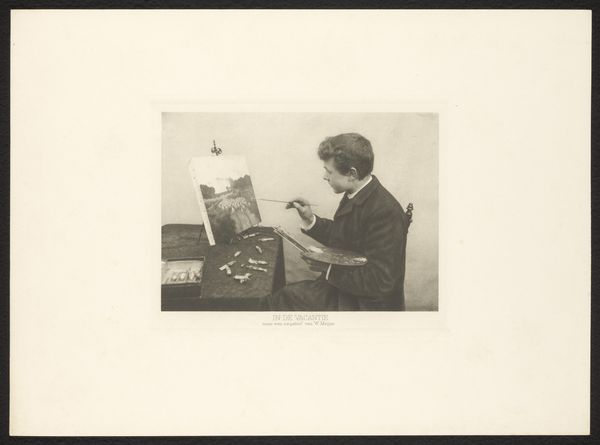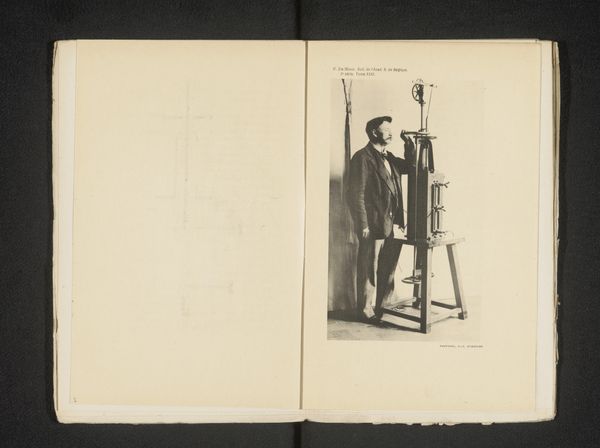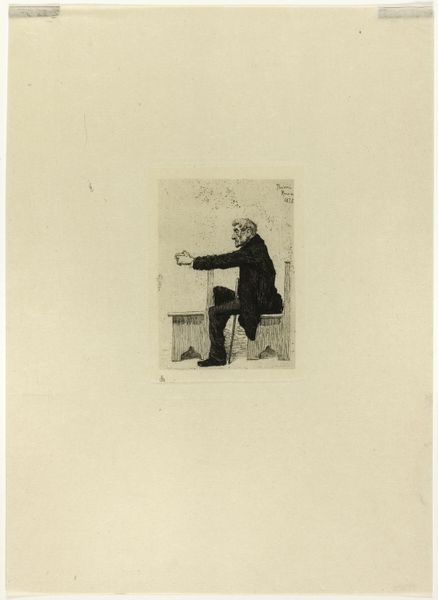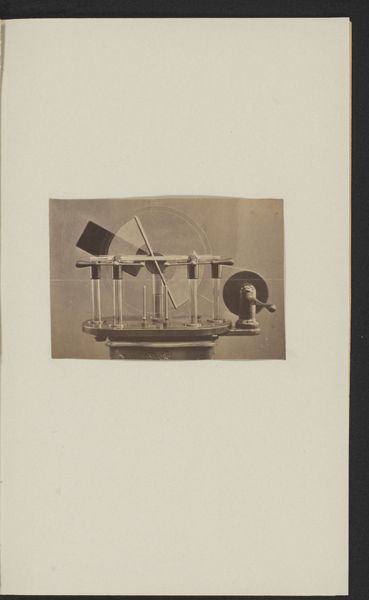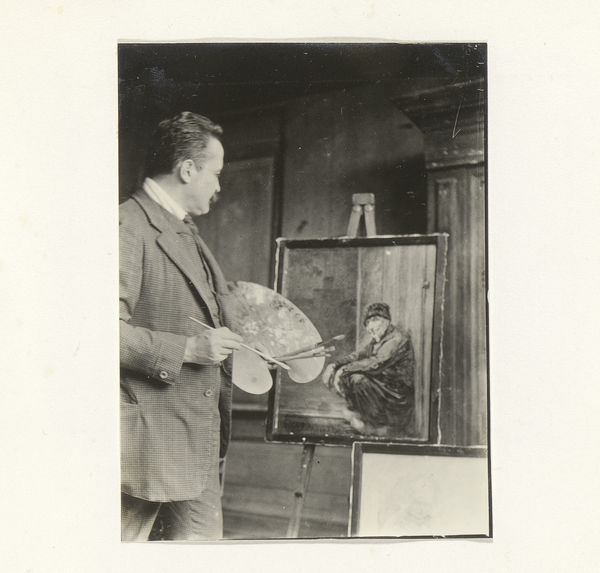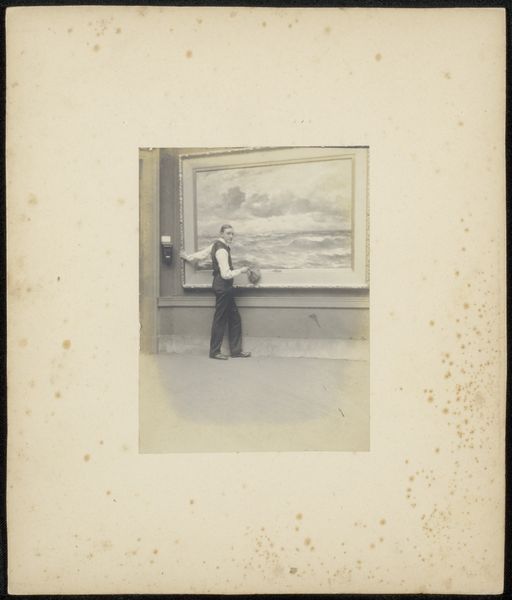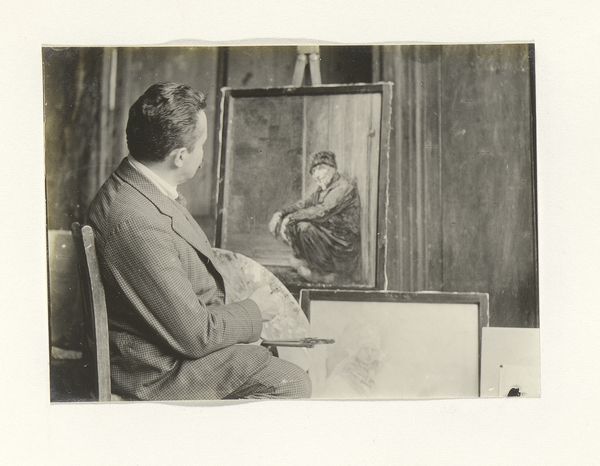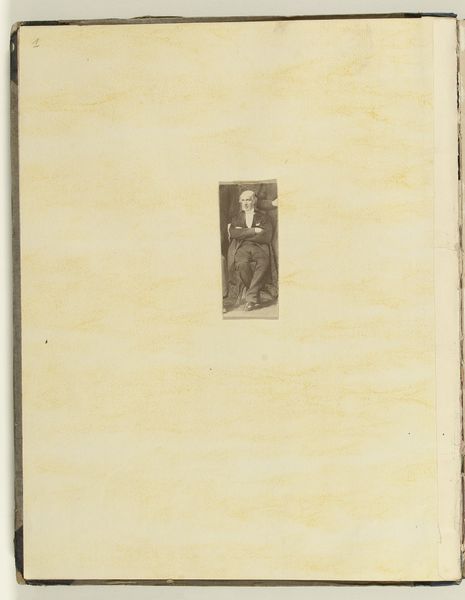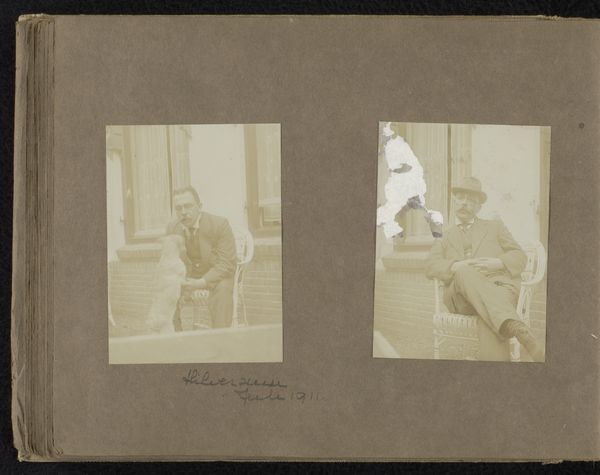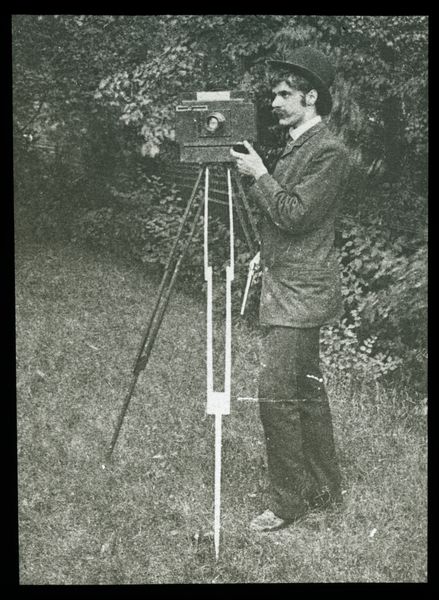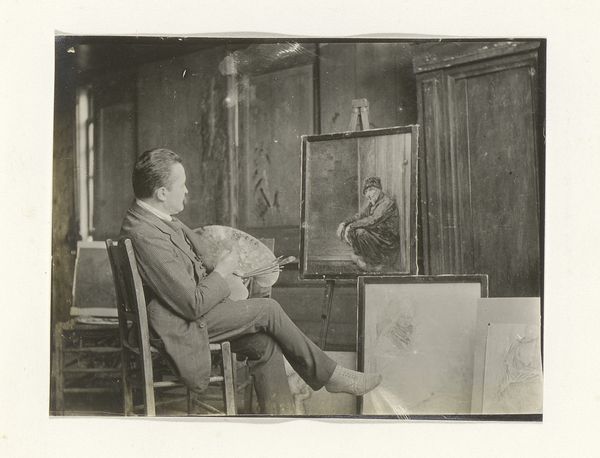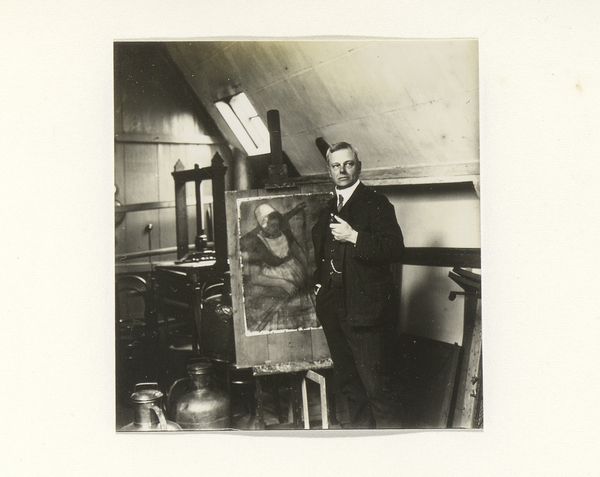
Dimensions: Image: 4.7 × 6.7 cm (1 7/8 × 2 5/8 in.) (a) Image: 13 × 10.7 cm (5 1/8 × 4 3/16 in.) (b)
Copyright: Public Domain
John Dillwyn Llewelyn made this photograph using the early process of calotype, resulting in a soft, warm-toned image on paper. The calotype, patented in 1841, involved coating paper with silver iodide, exposing it in a camera, and then developing the latent image. This process, while revolutionary, required considerable skill and an understanding of chemistry. The photograph’s material qualities—the paper's texture and the delicate gradations of tone—are integral to its aesthetic effect. The choice of subject matter is also telling. The detailed study of water lilies contrasts with the portrait of Llewelyn himself, emphasizing photography’s capacity to capture both the natural world and the human figure. Llewelyn’s work bridges the gap between scientific documentation and artistic expression, reflecting the broader Victorian interest in classifying and representing the world through new technologies. It reminds us that the meaning of any image lies not only in what it depicts, but in how it was produced and for what purpose.
Comments
No comments
Be the first to comment and join the conversation on the ultimate creative platform.
